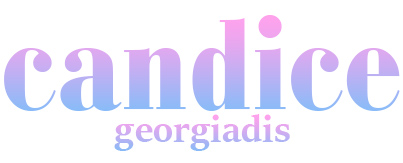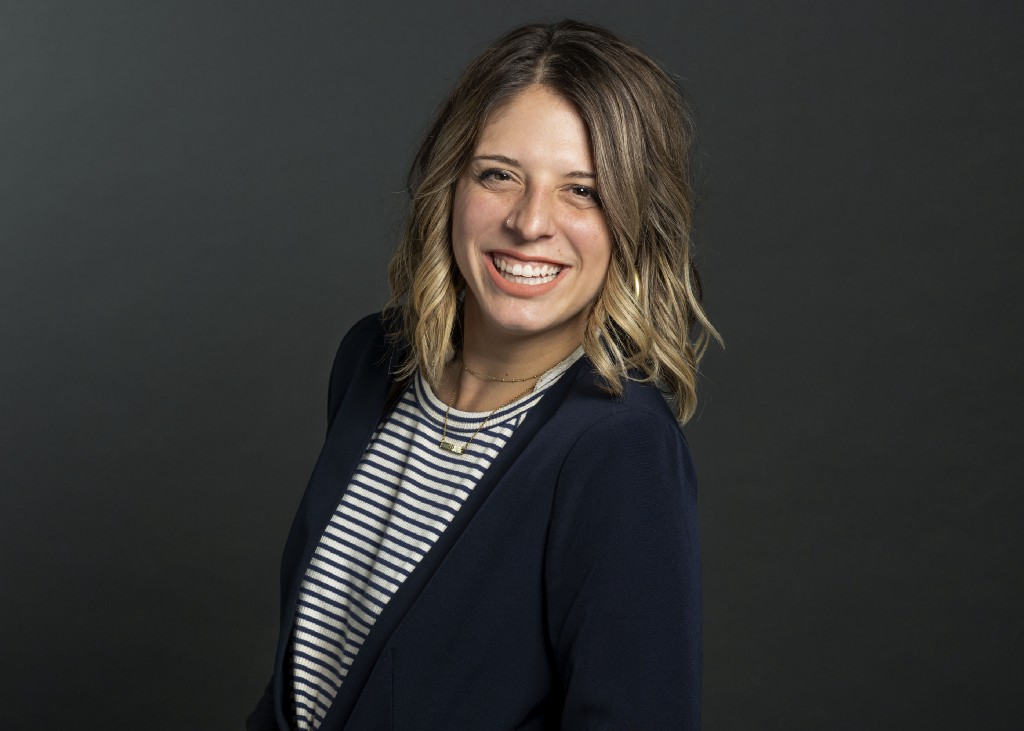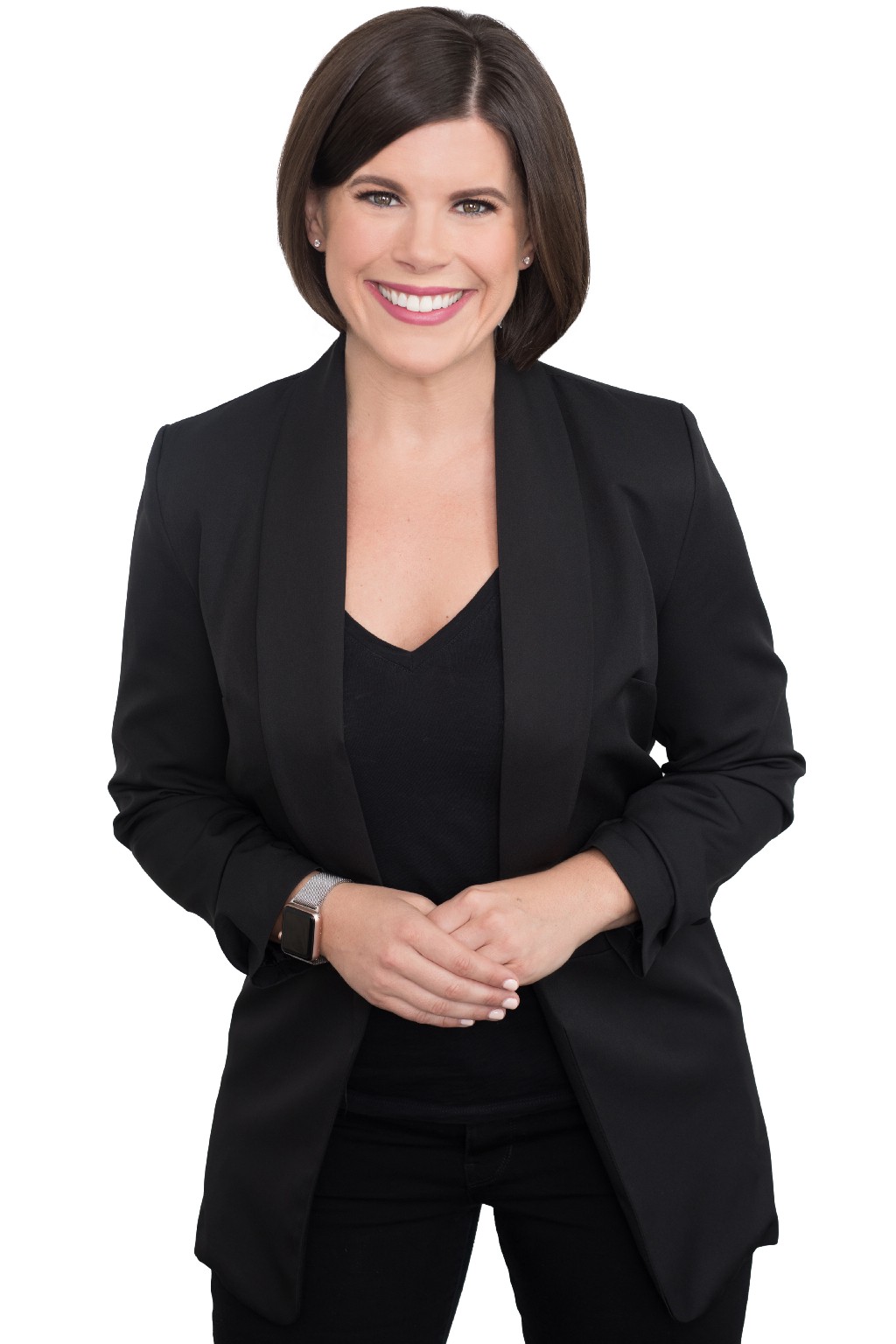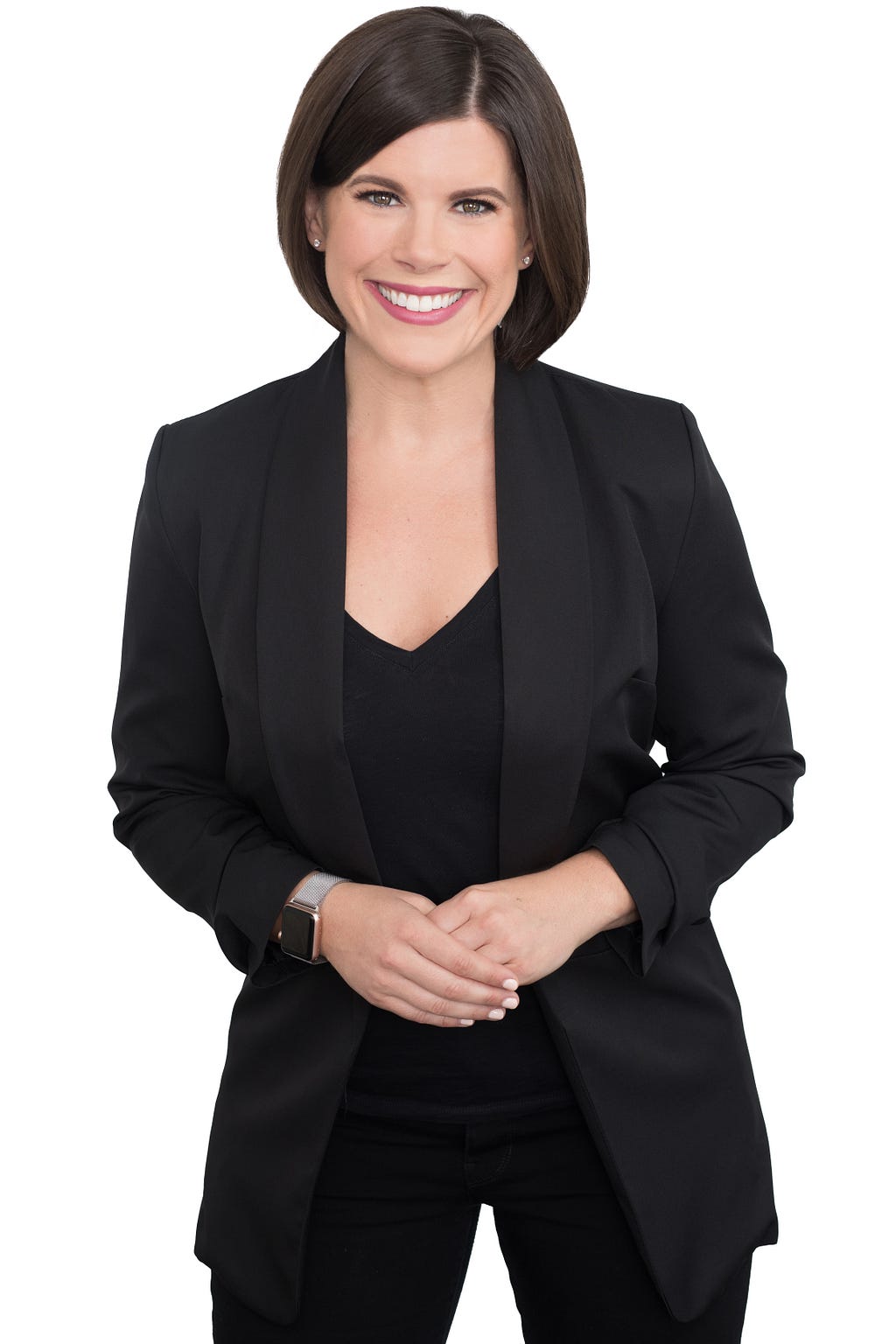Female Disruptors: Kirsten VandenBout of Helen & Gertrude On The Three Things You Need To Shake Up Your Industry
An Interview With Candice Georgiadis
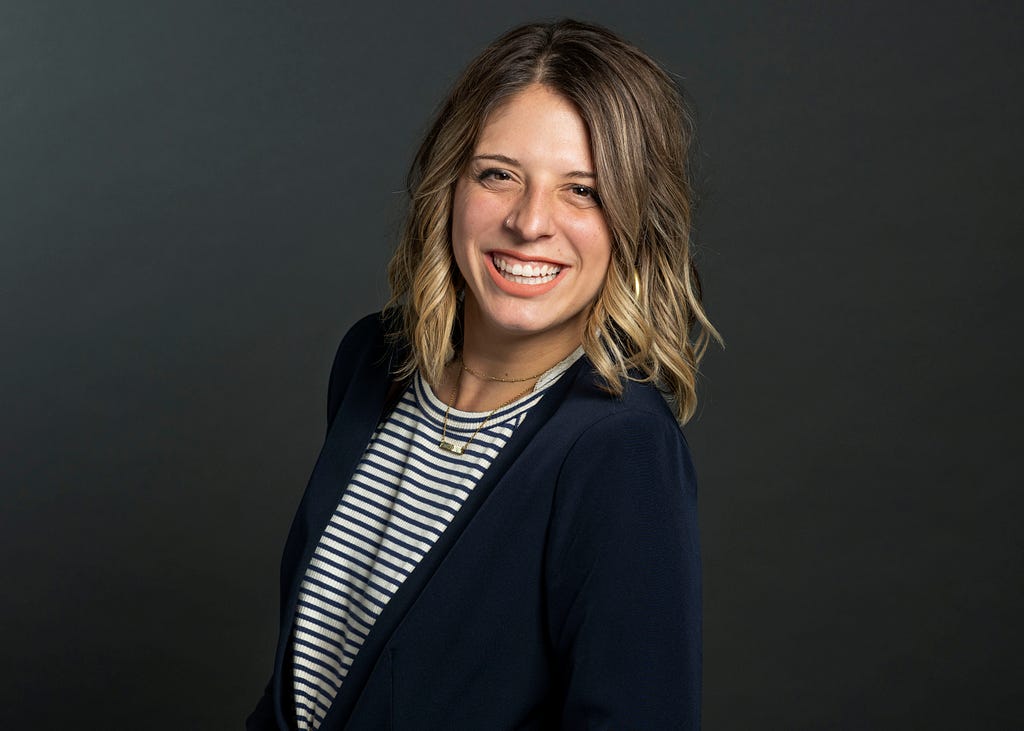
Allocate/resource your time — This was great advice when I needed to set time management boundaries. I would get so lost in contribution and making sure everyone else’s workloads were manageable from a mental health standpoint that I didn’t make time for my sanity. Especially allocating personal time for creativity and things that produced a better version of myself.
As a part of our series about women who are shaking things up in their industry, I had the pleasure of interviewing Kirsten VandenBout.
Kirsten is the Director of Creative Services at Helen & Gertrude, a women-owned, award-winning digital agency. When she isn’t working, you can find this soon-to-be-mama hanging with her dogs and husband, likely outdoors or in the middle of a home renovation project.
Thank you so much for doing this with us! Before we dig in, our readers would like to get to know you a bit more. Can you tell us a bit about your “backstory”? What led you to this particular career path?
As a kid, I always told people I wanted to be a “starving artist.” I had no clue what that meant as a five-year-old, but it sounded like a pretty sweet job. Ultimately, I knew my end goal was to be an artist of some kind. In middle school, I was homeschooled, so I had the flexibility to control my school schedule. I would race to get all my schoolwork done early in the day, so I had all afternoon and night to draw endlessly. After continuously hearing “you’re not going to make money in the art field,” I decided to collect some research. The pessimistic outlook surged a new drive inside of me; I had proven to my parents and those less-than optimistic teachers that you could be financially successful in careers like art direction. I worked hard in high school, entering scholarships and art award programs to build my portfolio. I was accepted into my dream school, The Fashion Institute of Technology, for fashion illustration. After graduation, I soon realized the industry was very niche, and there were more extensive opportunities out in the city of dreams. I reapplied to FIT this time in advertising design. The unconventional side of my story, which I don’t recommend to everyone, is that I dropped out my junior year, just shy of graduation. As a young 21-year-old, I reconciled with my mind that accepting a graphic design director job was wiser financially than accelerating my debt. That career opened up opportunities to agency life in content services at Brand Networks, which eventually spun off to Helen & Gertrude. After three years of determination and the spirit of proving myself, I became the director of creative services, leading the talented force of creative geniuses.
Can you tell our readers what it is about the work you’re doing that’s disruptive?
I encourage my teams to bring ALL the versions of themselves rather than fit into a cookie-cutter robot. The “female disruptor” in me promotes a creative culture that allows for mistakes to be embraced and creativity to be honest, which is the only way we can all improve and do better. I’m an “assertive” person, according to many career trait assessments. As Creative Director at a digital marketing agency, I’ll tell you that the word assertive doesn’t typically have a positive connotation. With that being said, I can’t pick and choose which version of myself I show up to work. I have learned to appreciate my “flaws,” whether internally or externally labeled. I have to identify “my weaknesses” as mislabeled strengths to accept my whole self. Too direct, assertive, and emotional can also be adapted to be a problem-solver, team advocate, or empathic leader. When I show up like this, I contribute to healthy industry culture and encourage others to do the same. By creating the space for others in our department who may not speak up, I seek ways to validate them and create safe environments for communication. I’m allowing creativity to come from excitement and safety, providing my teams with the ability to experiment without fear of judgment or failure.
Can you share a story about the funniest mistake you made when you were first starting? Can you tell us what lesson you learned from that?
In the first year of my career as a graphic designer, I created marketing materials before weekly auditorium events, including clothing merch, LED screen graphics, and printed materials that were handed out at the door. Every week, the titles and designs I created would be determined the week prior and communicated to me to be ready for the following week. The humor in this story involves a last-minute change to the message title. I take full responsibility for my lack of speaking up and clarifying (I’ll also note, we also changed our communication process soon after). The communication director stopped by my desk (hours before things were getting sent to print for the weekend) and said, “The new title would be called ‘Stuck in a Fence,’” (you know, very metaphorical, very creative, I thought). I immediately went to work, backspacing and adding the new title to all media outlets. On the eve of the event, our programming team and myself were all stunned to find out we had it wrong. The communication director could only laugh as he corrected us that the proper title was supposed to be called “Stuck in Offense.” Yes, we went with it because it was too late to change anything. And, yes, I was called out humorously in front of thousands to laugh at the mistake. The lesson I learned (and will always preach to future teams)? It all comes down to defining clarity and communication (… and a multi-person sign-off process helps, too!)
We all need a little help along the journey. Who have been some of your mentors? Can you share a story about how they made an impact?
There have been a few important ones, so I’ll share some names and lessons I’ve learned from each:
- Trina D, my first creative director, taught me how to make space to dream. Creativity comes from your personal experiences and expressions.
- My therapist, Joanne M, taught me to see the world as a grey space (vs B&W) and allow for opposing ideas to co-exist. This outlook has translated to every aspect of my life and work life. It’s a solid foundation for cultivating compassion and empathy for others.
- Becca P, our H&G CEO, taught me the most important lesson of always becoming better day by day and allowing space for failure.
Their impacts have given me permission to show up human and create space for others to do the same. I believe this mindset can encourage more harmonious and healthy environments in which we all want to live in.
In today’s parlance, being disruptive is usually a positive adjective. But is disrupting always good? When do we say the converse, that a system or structure has ‘withstood the test of time’? Can you articulate to our readers when disrupting an industry is positive, and when disrupting an industry is ‘not so positive’? Can you share some examples of what you mean?
Positive disruptions, I believe, occur when we can have self-awareness and predetermine the outcome of the situation. Is the impact being made one of benefit or consequence? And who is benefitting? Are the needs of others being met? One positive disruption is advocating for others and creating space for human connection, where we feel we belong and are safe.
Harmful disruptions would have the opposite effect. When I lack awareness of my social surroundings, the results have been toxic, awkward, and unharmonious environments. When I insert myself, it takes away the opportunity for others to be empowered, involved, and even feel safe to engage.
Can you share 3 of the best words of advice you’ve gotten along your journey? Please give a story or example for each.
- Allocate/resource your time — This was great advice when I needed to set time management boundaries. I would get so lost in contribution and making sure everyone else’s workloads were manageable from a mental health standpoint that I didn’t make time for my sanity. Especially allocating personal time for creativity and things that produced a better version of myself.
- Leadership requires self-awareness/consciousness of others’ needs — In my first year in a director position, I lacked significantly in this area. So much so that I was shocked when I received my EOY review. I needed to take an inventory of who I was, how I could rewire my strengths, and what I needed to be for others.
- Vulnerability and validation can unlock and build trust — Trust is the measurement of a relationship’s quality. New people joining our creative department have no reason to trust me as their leader in their early career at H&G. It takes being an authentic human willing to take ownership over mistakes, validate others’ successes, and most importantly, listen.
We are sure you aren’t done. How are you going to shake things up next?
Everything is shifting within the digital landscape. The speed at which content is being produced is at a record high, as is our mental health, and the ability to be agile, healthy, and an expert in the field is critical. My goal is to continue to empower all creatives and leaders within the industry to create space for humanity to express themselves freely and have the room to think imaginatively by playing. Expansive thinking within the workspace comes from the intersection of our stories, interests, passions, fears, and expertise.
In your opinion, what are the biggest challenges faced by ‘women disruptors’ that aren’t typically faced by their male counterparts?
The regret and mom-guilt we, as women, have on our shoulders. I’m almost half-through my first pregnancy, and the idea of maternity leave (and returning) is daunting. We have to deal with the guilt of balancing our time raising a child and excelling in our career goals. If you’re like me, we also have the conservative communities that outwardly judge us for being working moms in general and “sacrificing” the precious time with our babes for ourselves. It’s a lot to process and mentally build resilience through these seasons of motherhood.
Do you have a book/podcast/talk that’s had a deep impact on your thinking? Can you share a story with us?
“Dare to Lead with Brené Brown,” specifically her podcast recorded with America Ferrara called” Identity + Integrated Leadership.” These two women inspire us to refuse to categorize who we are as leaders, allowing a process of fundamental character trait transformation. While listening to this talk, I’ve learned to permit my whole self to show up and authentically be authentic in my process and workplace presence. Typically, I have a lot of self-criticisms — especially at the end of the day. I’m anxiously revisiting connections and conversations on how it “should have” gone. This new mindset has brought mental freedom. Self-forgiveness can eliminate the self-depletion we feed into at the end of each day.
You are a person of great influence. If you could inspire a movement that would bring the most amount of good to the most amount of people, what would that be? You never know what your idea can trigger. 🙂
In my early 20s, I started a blog “movement” to empower other early 20-year-old women to share their stories of overcoming life’s low moments. These stories were targeted to be shared with high school students going through the turmoil of young adult life — relationships, friend dynamics, eating disorders, etc., and defining who they are from their strength. I still identify with these values today. I always want to encourage others to create moments of vulnerability and lead by example. My “tool belt” is heavy with creative knowledge, adobe program techniques, creative idea prompts — but the essential tools that have proven accurate time and time again are being human and vulnerable. That is powerfully disruptive.
Can you please give us your favorite “Life Lesson Quote”? Can you share how that was relevant to you in your life?
“Listen. Just listen. You don’t have to agree. Just see if you can understand that there’s another person who has a completely different experience of the same reality.” — Esther Perel
An easier said than done quote. However, even mentally trying can offer up transformation. If I’ve learned anything from life in these last three years of our polarizing current events, listening and waiting to speak can be culturally disruptive.
How can our readers follow you online?
LinkedIn @kirstenvandenbout
Instagram — @kirsten_vandenbout
This was very inspiring. Thank you so much for joining us!
Female Disruptors: Kirsten VandenBout of Helen & Gertrude On The Three Things You Need To Shake Up… was originally published in Authority Magazine on Medium, where people are continuing the conversation by highlighting and responding to this story.
